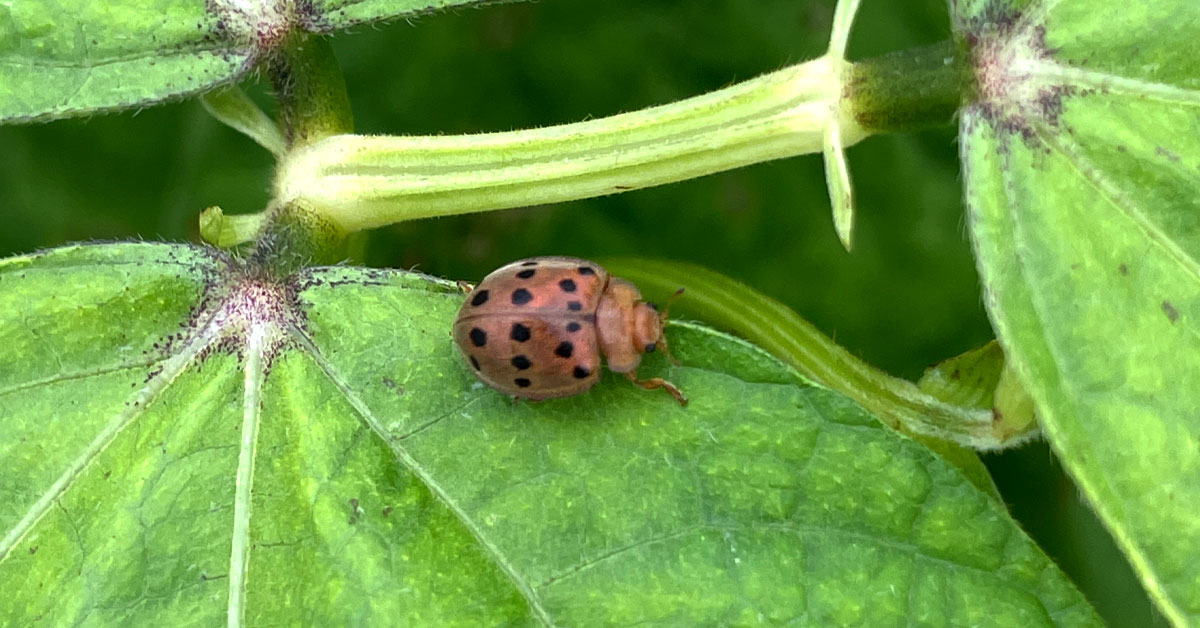This post may contain affiliate links. When you purchase through links on my site, I may earn a commission at no cost to you. See my Privacy Policy for details.
The Mexican bean beetle and I have a love-hate relationship. They love to eat the leaves of my green beans and I hate them!! Mexican bean beetles (Epilachna Varivestis) primarily feed on garden beans and field beans. My family loves to eat green beans so I plant a lot of green bean plants in my garden every year. This year I am working on planting enough green beans to be able to can them so we can have green beans available whenever we want them in the pantry.
Typical questions I see about these pests:
- What is eating my bean plant leaves?
- Why do my bean leaves look lacy?
- How to stop bugs from eating my bean plants?
- How to get rid of bean beetles?
- What organic pest controls can be used on Mexican bean beetles?
- What to spray on bean plants for pest control?
I am going to share some information about Mexican bean beetles and how I combat them in the garden.
Mexican Bean Beetle Life Cycle
The Mexican bean beetle is a type of lady beetle. The larvae of the Mexican bean beetle feed on the underside of bean leaves. As they eat the leaves it causes the leaves to turn brown and lacy. Eventually, the leaves will die and fall off the bean plants. Adult Mexican bean beetles will chew on leaves but may also eat the bean pods.
Female bean beetles will lay masses of yellow-orange eggs on the lower leaves of bean plants. Eggs will hatch in 5 to 14 days.
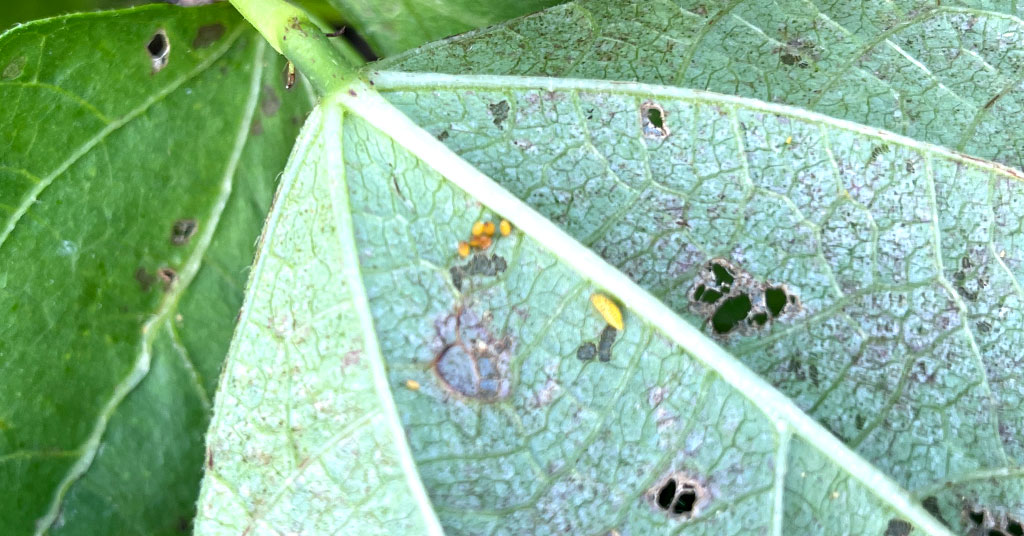
The larvae of the Mexican bean beetle are very strange-looking. They are yellow or orange-yellow and covered with spines. They will feed for about 3 weeks on the underside of the leaves.
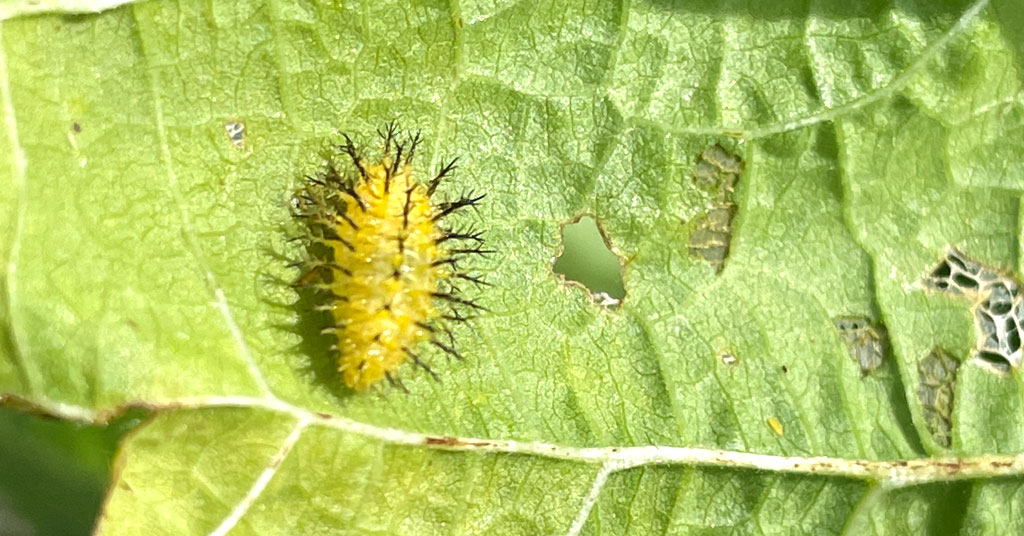
When the larvae are fully grown they pupate underneath the leaf.
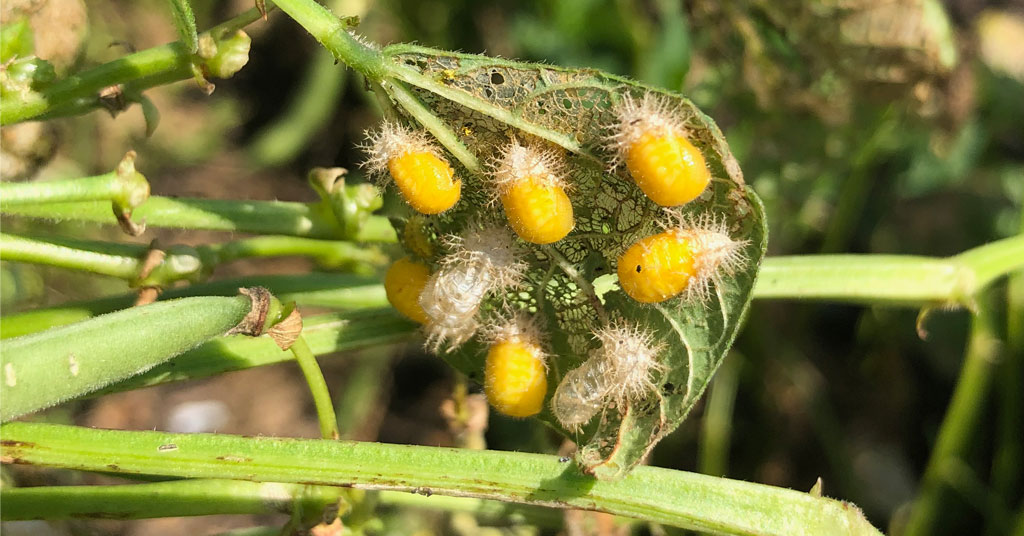
The adult Mexican bean beetles range in color from yellow to red-brown. They have 16 black spots on their wings, each wing has 8 spots arranged in 3 rows. Depending on your temperatures in your area you can get anywhere from 1 to 3 generations of Mexican bean beetles in your garden in 1 season. One generation is usual in western and northern states but up to 3 generations can occur in southern states. They will winter in the adult stage in areas along the edges of plantings or in leaf litter in fields and will emerge in late spring. The larvae and adults are usually feeding through July and August.
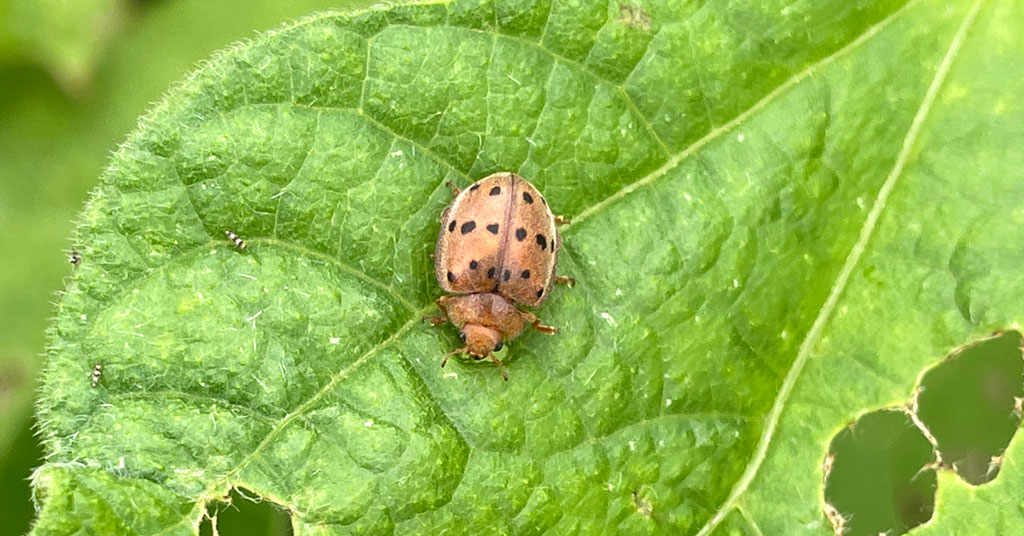
Organic Pest Control for Mexican Bean Beetle
As an organic gardener, I don’t want to be spraying my plants with chemicals to get rid of the beetles. My methods can take some time but if you have a smaller bean patch it can be quick. When you notice damage to your bean plants start checking the plants daily. I get a cup of water and add a little dish soap to it. I handpick the larvae and adult beetles daily and put them into a cup of soapy water. This will kill the beetles and help to stop the cycle. Mexican bean beetles will drop to the ground if you shake the plant too much. This is their way of trying to escape. Try to not shake your bean plants too much when you are hand-picking the beetles.
Look for their eggs and destroy them as soon as you find them. I have seen people use a roll of duck tape sticky side out to pull the eggs from the underside of the leaf. You can also use a lint roller to get the eggs of the leaves (I am going to try this method this year).
You can also cover your plants with a floating row cover before you find the beetles until the plants are large enough to withstand the leaf damage that the beetles cause. Another option is to attract or release native predators to help control the Mexican bean beetle population. Release spined soldier bugs to help control early generations of the pest or parasitic wasps as soon as possible after you see the egg clusters in your garden. You can apply organic insecticidal soap to the underside of the leaves or you can also try to use neem oil.
Grow Some Beans
Don’t let the fear of Mexican bean beetles cause you not to try growing delicious beans in your garden this year. They are typically a really easy crop to grow. If you stay on top of handpicking the beetles off of your plants you will have great success with your bean this year. I am more prepared this year to battle the bean beetles than I have been in past years. I am very excited about a huge bean harvest this year for my family.
Good luck in the garden!

